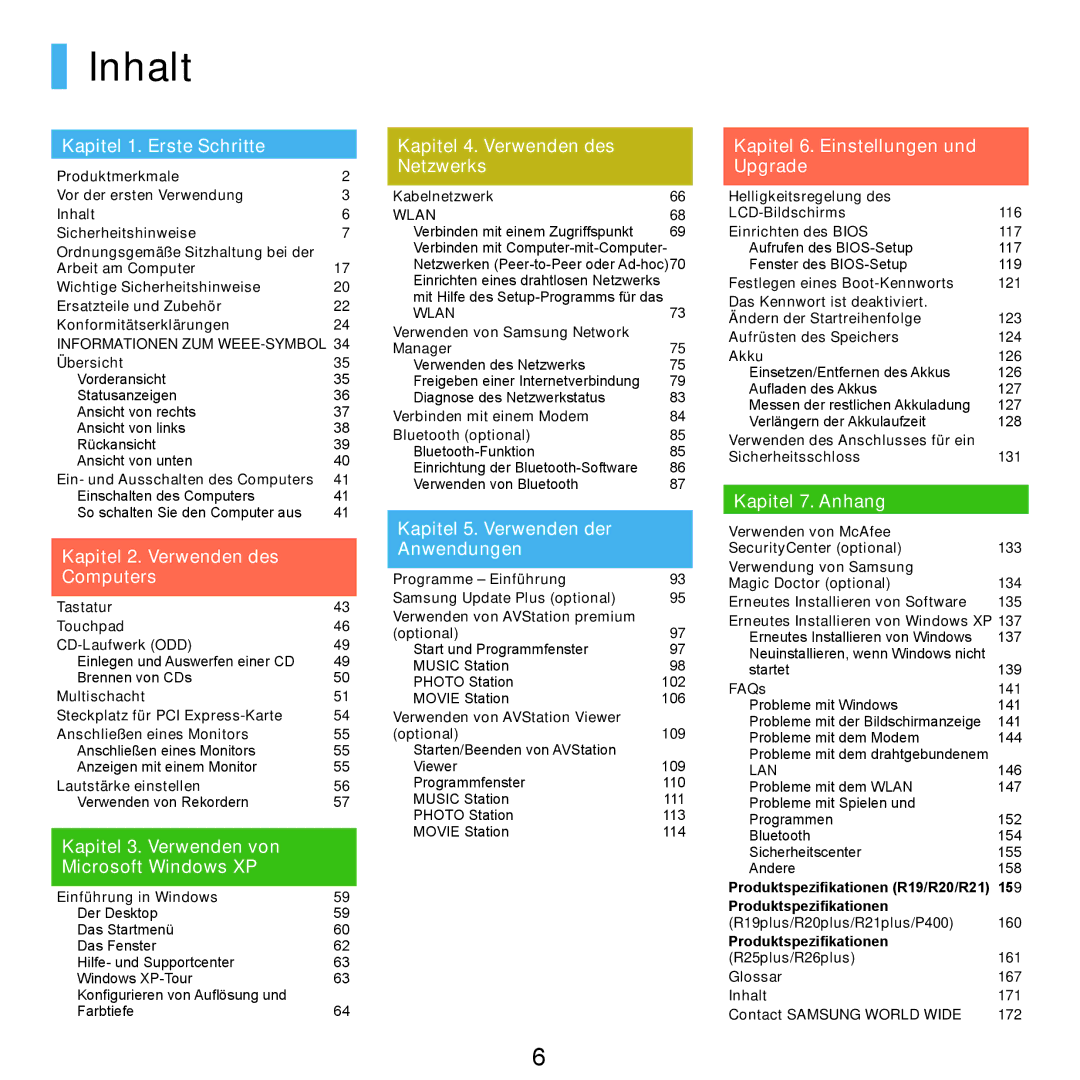NP-P400-RA02DE, NP-P400-RA01DE specifications
The Samsung NP-P400-RA01DE and NP-P400-RA02DE are part of Samsung's P Series laptops, designed to deliver portability, performance, and a range of features ideally suited for both casual users and professionals. These models encapsulate a blend of design, technology, and user-friendly experiences that cater to a wide audience.At the heart of these laptops lies a powerful Intel processor, which provides robust performance for everyday tasks such as browsing, document editing, and multimedia consumption. The NP-P400 series is known for its balance of power and efficiency, ensuring users can multitask without noticeable lag. This makes it suitable for students, business professionals, and anyone in need of a reliable device for both work and play.
One standout feature of the NP-P400-RA01DE and NP-P400-RA02DE is their vibrant display. With a bright screen offering high-resolution visuals, users can enjoy a stunning viewing experience whether they are watching videos, editing photos, or working on presentations. The laptop's graphics technology further enhances visual performance, making it an excellent choice for light gaming as well.
In terms of design, the NP-P400 series boasts a sleek and modern aesthetic, with a lightweight chassis that facilitates easy portability. This makes it an ideal option for users on the go, allowing them to carry the laptop without unnecessary strain. The ergonomically designed keyboard and trackpad provide comfortable navigation and typing, enhancing overall productivity.
Connectivity is also a focal point for the NP-P400 models, featuring a variety of ports that support different devices and peripherals. This includes USB ports for external devices, HDMI for external displays, and an SD card slot for easy data transfers. With built-in Wi-Fi and Bluetooth support, users can easily connect to the internet and other devices seamlessly.
Battery life is another important characteristic of the NP-P400 series. The laptops are designed to provide long-lasting power, allowing users to work or enjoy entertainment for extended periods without needing to search for an outlet.
Overall, the Samsung NP-P400-RA01DE and NP-P400-RA02DE are versatile laptops that provide a comprehensive mix of performance, portability, and practicality. With their advanced features, stylish design, and user-oriented experience, they stand out as reliable options for anyone in need of a high-quality laptop.

